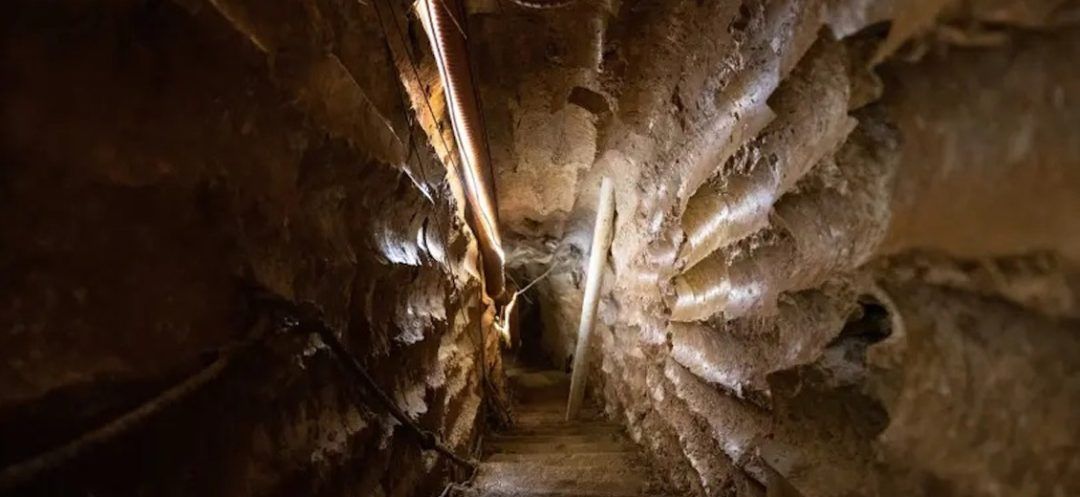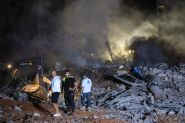- Home
- War in the Middle East
- The Government Turning a Blind Eye to Hezbollah’s Weapon-Laden Tunnels

In his latest speech, Hezbollah’s Secretary General Hassan Nasrallah called on the Lebanese to “rest” and “go back to their homes,” in southern Lebanon, announcing that revenge for the killing of top Hezbollah commander Fouad Shokr in an Israeli strike in Beirut’s Southern suburb had been “accomplished.” But incessant cross-border exchanges between Hezbollah and Israel continue to pose a significant risk of a wider conflagration.
Hezbollah’s recent revelation of the existence of tunnels, where heavy military equipment is concealed, has raised new concerns.
Where could these tunnels be located, and why has the government failed to address the issue? The apocalyptic Beirut port explosion serves as a grim reminder that both Hezbollah and the state place little value on human life.
Possible Location, Missiles Transport
Riad Kahwaji, a Dubai-based Middle East security and defense analyst and director of the Institute for Near East and Gulf Military Analysis (INEGMA), suggested that Hezbollah’s tunnels, referred to as “Imad 4,” are likely located near the Syrian border in the Beqaa Valley. They are believed to house large missiles, including ballistic missiles set on big trucks. Kahwaji says that the video, released by Hezbollah, showing these tunnels “looks like it’s authentic.”
In an interview with This is Beirut, Kahwaji argues that such a facility could not have been built without the knowledge of Lebanese security agencies. He suggested that at least one agency knew about it but kept it secret. “Given the large equipment required to dig such sizable tunnels, the big machinery could not have entered the country without the knowledge of Lebanese security agencies, which all possess intelligence arms,” Kahwaji said, noting that if the tunnels were built in remote mountainous areas, ordinary civilians might not have noticed them.
Kahwaji also pointed out that the trucks seen in the video could have been brought into Lebanon via ships or by land through Syria, along with the large missiles. “Hezbollah is capable of bringing whatever equipment it wants into the country via air, land, and sea, but they prefer to use Syrian ports for added security before transferring them by land, or they could bring them directly by air from Iran,” he said.
Civilians at Risk, Military Takes Shelter!
Former Deputy Prime Minister and Lebanese Forces (LF) MP Ghassan Hasbani ironized that Hezbollah reversed typical wartime roles, by placing civilians at risk above ground while its fighters take shelter underground, as seen in Gaza. He criticized the tactic of “prioritizing fighters and equipment over the safety of ordinary citizens,” in a country where the state is incapable of protecting its people because “it has no control over decisions of war and peace.”
The LF MP blasted the Lebanese government for failing to assert its sovereignty over national territory, and for reeling under Hezbollah’s hegemony rather than acting independently. “The government has not taken any action to protect the citizens from the dangers posed by missiles stored on Lebanese soil,” he said, asking, “What would happen if these storage facilities malfunctioned and caused explosions?”
Hasbani argued that the government's inaction reflects its submission to Hezbollah, charging that some government factions are aligned with Hezbollah.
He questioned whether Lebanese security agencies were aware of these tunnels, drawing a parallel to the Beirut port explosion. “Usually, security forces respond quickly to minor violations, how come such significant threats are being overlooked?
Hasbani placed the responsibility on the Council of Ministers and the relevant ministries, such as the Ministry of Interior and Municipalities. “This matter would naturally be dealt with if we were committed to enforcing the law, along with the security forces responsible for stopping violations,” he added in an interview with This is Beirut.
The existence of Hezbollah’s complex underground facilities and tunnels has been revealed to the public, after years of speculation, in a four-and-a-half-minute video titled “Our mountains are our storehouses.”
Read more




Comments